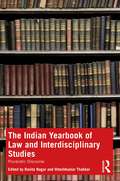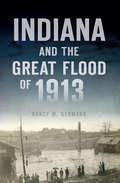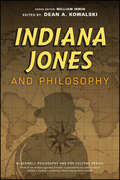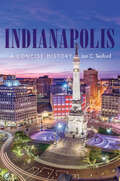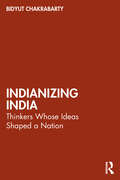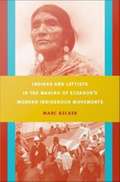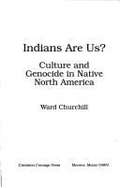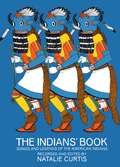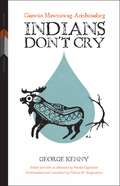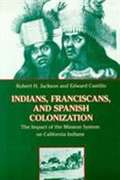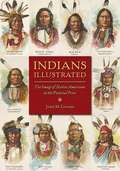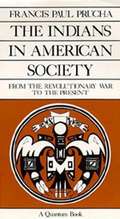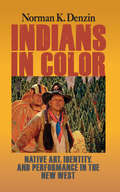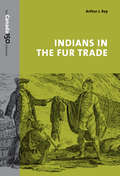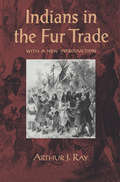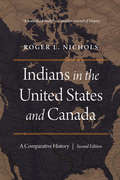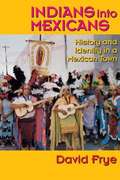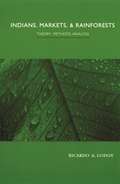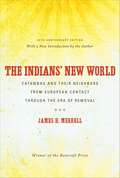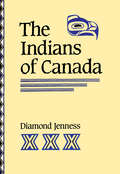- Table View
- List View
The Indian Yearbook of Law and Interdisciplinary Studies: Pluralistic Discourse
by Ranita Nagar Hiteshkumar ThakkarThis yearbook focuses on law and its interdisciplinarity in India. It brings together scholars of law, economics, and policy to foster multidisciplinary thinking and analysis across subject areas. The contributors to this volume embody an interdisciplinary spirit through their academic experience and aim to bring to the fore unique suggestions for a better understanding of the law. The volume explores various key issues that are central to state policy demanded by a functioning democracy, in terms of democratic quality, aspirations and sustainability. It discusses global and social issues, such as foreign interference in domestic elections, feminism, and climate change and looks at other subjects such as economics, religion, history, literature from the perspective of law. A unique contribution to the study of law in India, this book will be an essential read for scholars and researchers of law, jurisprudence, political science, economics, public policy, sociology, social anthropology, the Indian Constitution, and South Asia studies.
Indiana and the Great Flood of 1913 (Disaster)
by Nancy M. GermanoIndiana suffered enormous losses in the Great Flood of 1913, yet this disaster is largely forgotten. The combined tornado and flood barreled through Terre Haute, killing more than twenty. In Peru, 114 miles away, the circus lost most of its animals in the storm. At the southwestern corner of the state, a "sea of water," as local papers put it, washed over Evansville, turning streets into canals. In the capital, levee failures left hundreds homeless and vulnerable to disease and famine. Pulling from archival photographs, newspapers and local accounts, Dr. Nancy M. Germano shares stories from across the state to reveal how Indiana's history of settlement and development contributed to one of the state's worst disasters.
Indiana Jones and Philosophy: Why Did it Have to be Socrates? (The Blackwell Philosophy and Pop Culture Series)
by William IrwinINDIANA JONES AND PHILOSOPHY What does it mean to choose wisely? Can heroes seek fortune and glory? Why does Indy take a leap of faith? Do Indy’s adventures provide him evidence of the supernatural? Should we hide the Ark of the Covenant in a military-controlled warehouse? Why are museums so important to archaeology? If adventure has a name, it must be Indiana Jones! He’s both a mild-mannered archaeology professor and an intrepid adventurer traversing the globe in search of lost artifacts. Whether seeking the Ark of the Covenant in Egypt, the Sankara Stones in India, the Holy Grail in Turkey, or a mysterious crystal skull in Peru, Indy’s adventures never fail to delight audiences. Indiana Jones and Philosophy takes you on a whirlwind journey to investigate some of the most enduring questions about the human condition. You’ll read about how Indy has wronged Marion Ravenwood, how a virtuous person would make amends, the strides Indy makes to repair his relationship with his father, why Indy distinguishes fact from truth when he pursues archaeological treasures, and much more. With trusty guides such as Aristotle, Camus, Kant, and Nietzsche at your side, you’ll consider possible answers to these questions and see Indiana Jones in a whole new light! Comprehensive, immersive, and engaging, Indiana Jones and Philosophy offers you an accessible and lively opportunity to dive deeper into the world of Indiana Jones and appreciate the character’s greatness anew!
Indiana Timelinks: People, Places and Culture in Europe and the Americas [Grade 6]
by James A. Banks Kevin P. Colleary Linda Greenow Walter C. Parker Emily M. Schell Dinah ZikeNIMAC-sourced textbook
Indiana The United States, Early Years [Grade 5]
by James A. Banks Kevin P. Colleary Linda Greenow Walter C. Parker Emily M. Schell Dinah ZikeNIMAC-sourced textbook
Indianapolis: A Concise History (Heartland History)
by Jon C. TeafordAs its name denotes, Indianapolis is without question Indiana's city. Known as the Crossroads of America, Indianapolis and the surrounding communities have and continue to play an important role in politics, logistics, and commerce for both the state and the country.Indianapolis: A Concise History looks at the development of the city from a frontier village to a major railroad city in the late nineteenth century and through its continued growth in the twentieth century. Author and historian Jon C. Teaford reveals the origins of the Indianapolis Speedway, the rise and fall of the Ku Klux Klan, the persistent racial tension in the city, and the revitalization efforts under Mayor William Hudnut and his successors. Since 1824 Indianapolis has been the state's largest city, its political center, and the home of Indiana's state government, and it continues to be a center for urban growth.
Indianizing India: Thinkers Whose Ideas Shaped a Nation
by Bidyut ChakrabartyThis book presents a comprehensive portrait of how Indians conceived of the idea of India. It highlights the diverse traditions and intellectual threads that contributed to the making of vibrant democracy.The book:• Examines the different ideas of India through 14 eminent Indian thinkers: Mahatma Gandhi, Rabindranath Tagore, Dayanand Saraswati, VD Savarkar, Savitribai Phule, Pandita Ramabai, Maulana Azad, Jawaharlal Nehru, BR Ambedkar, Subhash Chandra Bose, Aurobindo Ghosh, Sarala Devi Chaudhurani and MA Jinnah;• Highlights how ancient and modern intellectual discourses coalesced with the aspirations of ordinary Indians under the yoke of colonialism;• Challenges colonial constructs and linear approaches to studying India.Accessibly written, this book is essential reading for students and researchers of Indian political thought, modern history, political science, and South Asian studies.
Indians and Leftists in the Making of Ecuador's Modern Indigenous Movements
by Marc BeckerIn June 1990, Indigenous peoples shocked Ecuadorian elites with a powerful uprising that paralyzed the country for a week. Militants insisted that the government address Indigenous demands for land ownership, education, and economic development. This uprising was a milestone in the history of Ecuador's social justice movements, and it inspired popular organizing efforts across Latin America. While the insurrection seemed to come out of nowhere, Marc Becker demonstrates that it emerged out of years of organizing and developing strategies to advance Indigenous rights. In this richly documented account, he chronicles a long history of Indigenous political activism in Ecuador, from the creation of the first local agricultural syndicates in the 1920s through the galvanizing protests of 1990. In so doing, he reveals the central role of women in Indigenous movements and the history of productive collaborations between rural Indigenous activists and urban leftist intellectuals. Becker explains how rural laborers and urban activists worked together in Ecuador, merging ethnic and class-based struggles for social justice. Socialists were often the first to defend Indigenous languages, cultures, and social organizations. They introduced rural activists to new tactics, including demonstrations and strikes. Drawing on leftist influences, Indigenous peoples became adept at reacting to immediate, local forms of exploitation while at the same time addressing broader underlying structural inequities. Through an examination of strike activity in the 1930s, the establishment of a national-level Ecuadorian Federation of Indians in 1944, and agitation for agrarian reform in the 1960s, Becker shows that the history of Indigenous mobilizations in Ecuador is longer and deeper than many contemporary observers have recognized.
Indians & Anthropologists: Vine Deloria Jr. and the Critique of Anthropology
by Thomas Biolsi Larry J. ZimmermanA discussion of the relationship between Native Americans and the disciplines of anthropology and archeology.
Indians Are Us?: Culture and Genocide in Native North America
by Ward ChurchillChurchill sets out to expose those who would appropriate native culture and turn it into a commodity to be bought and sold. He reviews books and movies which have historical inaccuracies and which perpetuate stereotypes. Other essays deal with the issue of products and sports teams and the impact of government definitions of who is and is not Indian.
The Indians' Book
by Natalie CurtisLore, music, narratives, dozens of drawings by Indians themselves from an authoritative and important survey of native culture among Plains, Southwestern, Lake, and Pueblo Indians. Standard work in popular ethnomusicology. Features 149 songs in full notation. Includes 23 drawings and 23 photos.
Indians Don't Cry: Gaawiin Mawisiiwag Anishinaabeg
by George Kenny Renate Eigenbrod Patricia M. NingewanceGeorge Kenny is an Anishinaabe poet and playwright who learned traditional ways from his parents before being sent to residential school in 1958. When Kenny published his first book, 1982’s Indians Don’t Cry, he joined the ranks of Indigenous writers such as Maria Campbell, Basil Johnston, and Rita Joe whose work melded art and political action. Hailed as a landmark in the history of Indigenous literature in Canada, this new edition is expected to inspire a new generation of Anishinaabe writers with poems and stories that depict the challenges of Indigenous people confronting and finding ways to live within urban settler society. Indians Don’t Cry: Gaawin Mawisiiwag Anishinaabeg is the second book in the First Voices, First Texts series, which publishes lost or underappreciated texts by Indigenous artists. This new bi-lingual edition includes a translation of Kenny’s poems and stories into Anishinaabemowin by Pat Ningewance and an afterword by literary scholar Renate Eigenbrod.
Indians, Franciscans, and Spanish Colonization: The Impact Of The Mission System On California Indians
by Robert Jackson Edward CastilloThis ethnohistory, now in paperback, examines Indian life in the twenty-one missions Franciscans established in Alta California. In describing how the missions functioned between 1769 and 1848, the authors draw on previously unused sources to analyze change and continuity in Indian material culture and religious practices. The twin goals of Franciscans were to mold Indians into a work force that would produce surplus grain for military garrisons and to regulate their moral conduct and religious practices. The authors use production records to show the missions were quite effective in serving the economic goals. Also carefully assessed are the efforts to transform the culture and world view of Indians by delineating how they coped, their history of disease and death, and their efforts at resistance.
Indians Illustrated: The Image of Native Americans in the Pictorial Press
by John M CowardAfter 1850, Americans swarmed to take in a raft of new illustrated journals and papers. Engravings and drawings of "buckskinned braves" and "Indian princesses" proved an immensely popular attraction for consumers of publications like Frank Leslie's Illustrated Newspaper and Harper's Weekly . In Indians Illustrated , John M. Coward charts a social and cultural history of Native American illustrations--romantic, violent, racist, peaceful, and otherwise--in the heyday of the American pictorial press. These woodblock engravings and ink drawings placed Native Americans into categories that drew from venerable "good" Indian and "bad" Indian stereotypes already threaded through the culture. Coward's examples show how the genre cemented white ideas about how Indians should look and behave--ideas that diminished Native Americans' cultural values and political influence. His powerful analysis of themes and visual tropes unlocks the racial codes and visual cues that whites used to represent--and marginalize--native cultures already engaged in a twilight struggle against inexorable westward expansion.
The Indians in American Society: From the Revolutionary War to the Present
by Francis P. PruchaAmerican Indian affairs are much in the public mind today- hotly contested debates over such issues as Indian fishing rights, land claims, and reservation gambling hold our attention. While the unique legal status of American Indians rests on the historical treaty relationship between Indian tribes and the federal government, until now there has been no comprehensive history of these treaties and their role in American life. Francis Paul Prucha, a leading authority on the history of American Indian affairs, argues that the treaties were a political anomaly from the very beginning. The term "treaty" implies a contract between sovereign independent nations, yet Indians were always in a position of inequality and dependence as negotiators, a fact that complicates their current attempts to regain their rights and tribal sovereignty. Prucha's impeccably researched book, based on a close analysis of every treaty, makes possible a thorough understanding of a legal dilemma whose legacy is so palpably felt today.
Indians in Color: Native Art, Identity, and Performance in the New West
by Norman K DenzinIn Indians in Color, noted cultural critic Norman K. Denzin addresses the acute differences in the treatment of artwork about Native America created by European-trained artists compared to those by Native artists. In his fourth volume exploring race and culture in the New West, Denzin zeroes in on painting movements in Taos, New Mexico over the past century. Part performance text, part art history, part cultural criticism, part autoethnography, he once again demonstrates the power of visual media to reify or resist racial and cultural stereotypes, moving us toward a more nuanced view of contemporary Native American life. In this book, Denzin-contrasts the aggrandizement by collectors and museums of the art created by the early 20th century Taos Society of Artists under railroad sponsorship with that of indigenous Pueblo painters;-shows how these tensions between mainstream and Native art remains today; and-introduces a radical postmodern artistic aesthetic of contemporary Native artists that challenges notions of the “noble savage.”
Indians in Kenya
by Sana AiyarSana Aiyar chronicles the strategies by which Indians sought a political voice in Kenya, from the beginning of colonial rule to independence. She examines how the strands of Indians' diasporic identity influenced Kenya's leadership--from partnering with Europeans to colonize East Africa, to collaborating with Africans to battle racial inequality.
Indians in the Family: Adoption and the Politics of Antebellum Expansion
by Dawn PetersonThrough stories of a dozen white adopters, adopted Indian children, and their Native parents in early America, Dawn Peterson shows the role adoption and assimilation played in efforts to subdue Native peoples. As adults, adoptees used their education to thwart U.S. claims to their homelands, setting the stage for the Indian Removal Act of 1830.
Indians in the Fur Trade: Their Roles as Trappers, Hunters, and Middlemen in the Lands Southwest of Hudson Bay, 1660-1870
by Arthur RayFirst published in 1974, this best-selling book was lauded by Choice as 'an important, ground-breaking study of the Assiniboine and western Cree Indians who inhabited southern Manitoba and Saskatchewan' and 'essential reading for anyone interested in the history of the Canadian west before 1870.' Indians in the Fur Trade makes extensive use of previously unpublished Hudson's Bay Company archival materials and other available data to reconstruct the cultural geography of the West at the time of early contact, illustrating many of the rapid cultural transformations with maps and diagrams. Now with a new introduction and an update on sources, it will continue to be of great use to students and scholars of Native and Canadian history.
Indians in the Fur Trade
by Arthur RayFirst published in 1974, this best-selling book was lauded by Choice as 'an important, ground-breaking study of the Assiniboine and western Cree Indians who inhabited southern Manitoba and Saskatchewan' and 'essential reading for anyone interested in the history of the Canadian west before 1870.' Indians in the Fur Trade makes extensive use of previously unpublished Hudson's Bay Company archival materials and other available data to reconstruct the cultural geography of the West at the time of early contact, illustrating many of the rapid cultural transformations with maps and diagrams. Now with a new introduction and an update on sources, it will continue to be of great use to students and scholars of Native and Canadian history.
Indians in the United States and Canada: A Comparative History, Second Edition
by Roger L. NicholsDrawing on a vast array of primary and secondary sources, Roger L. Nichols traces the changing relationships between Native peoples and whites in the United States and Canada from colonial times to the present. Dividing this history into five stages, beginning with Native supremacy over European settlers and concluding with Native peoples’ political, economic, and cultural resurgence, Nichols carefully compares and contrasts the effects of each stage on Native populations in the United States and Canada. This second edition includes new chapters on major transformations from 1945 to the present, focusing on social issues such as transracial adoption of Native children, the uses of national and international media to gain public awareness, and demands for increasing respect for tribal religious practices, burial sites, and historic and funerary remains.
Indians into Mexicans: History and Identity in a Mexican Town
by David FryeThe people of Mexquitic, a town in the state of San Luis Potosí in rural northeastern Mexico, have redefined their sense of identity from "Indian" to "Mexican" over the last two centuries. In this ethnographic and historical study of Mexquitic, David Frye explores why and how this transformation occurred, thereby increasing our understanding of the cultural creation of "Indianness" throughout the Americas.<P><P>Frye focuses on the local embodiments of national and regional processes that have transformed rural "Indians" into modern "Mexicans": parish priests, who always arrive with personal agendas in addition to their common ideological baggage; local haciendas; and local and regional representatives of royal and later of national power and control. He looks especially at the people of Mexquitic themselves, letting their own words describe the struggles they have endured while constructing their particular corner of Mexican national identity.
Indians, Markets, and Rainforests: Theoretical, Comparative, and Quantitative Explorations in the Neotropics
by Ricardo GodoyThis book addresses two important and related questions: does participation in a market economy help or hurt indigenous peoples and how does it affect the conservation of tropical rainforest flora and fauna? Oddly, there have been few quantitative studies that have addressed these issues.Ricardo Godoy's research takes an important step toward rectifying this oversight by investigating five different lowland Amerindian societies of tropical Latin America—all of which are experiencing deep changes as they modernize. Godoy examines the effect of markets on a broad range of areas including health, conservation of flora and fauna, leisure, folk knowledge, reciprocity, and private time preference. He concludes that, contrary to considerable anthropological theory, the effect of markets on the quality of life and the rainforest are often unclear or benign. Godoy uses multivariate techniques to examine the changes modernization has had on many indicators of the quality of life and the environment and concludes that the seeds of socioeconomic differentiation may already lie dormant in simple economies.The impact of modernization on lowland Amerindians is a topic of great concern to anthropologists, researchers, and policymakers in developing nations, and this book is a significant contribution to the debate about the likely future of indigenous people.
The Indians’ New World
by James H. MerrellThis eloquent, pathbreaking account follows the Catawbas from their first contact with Europeans in the sixteenth century until they carved out a place in the American republic three centuries later. It is a story of Native agency, creativity, resilience, and endurance. Upon its original publication in 1989, James Merrell's definitive history of Catawbas and their neighbors in the southern piedmont helped signal a new direction in the study of Native Americans, serving as a model for their reintegration into American history. In an introduction written for this twentieth anniversary edition, Merrell recalls the book's origins and considers its place in the field of early American history in general and Native American history in particular, both at the time it was first published and two decades later.
The Indians of Canada
by Diamond JennessFirst published in 1932, The Indians of Canada remains the most comprehensive works available on Canada's Indians. Part one includes chapters on languages, economic conditions, food resources, hunting and fishing, dress and adornment, dwellings, travel and transportation, trade and commerce, social and political organization, social life, religion, folklore and traditions, and drama, music, and art. The second part of the book describes the tribes in different groupings: the migratory tribbes of the eastern woodlands, the plains tribes, tribes of the Pacific coast, of the Cordillera, and the Mackenzie and Yukon River basins, and finally the Eskimo.
